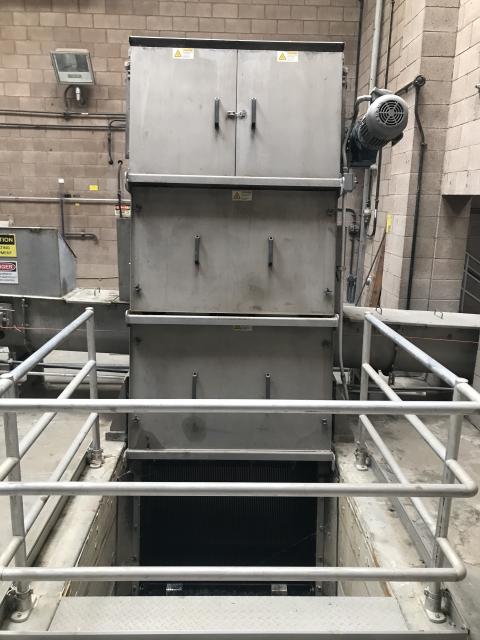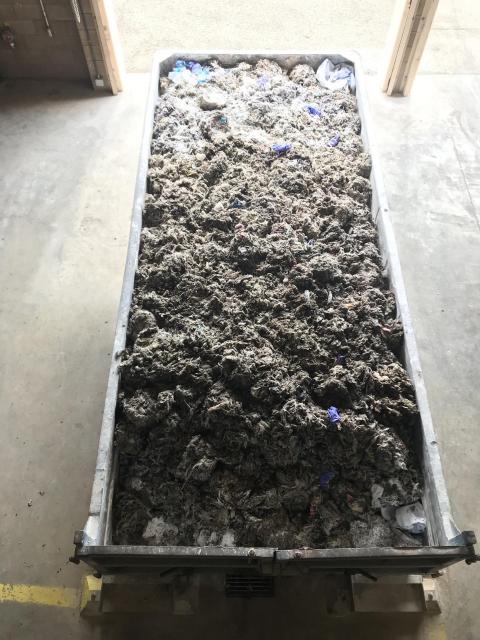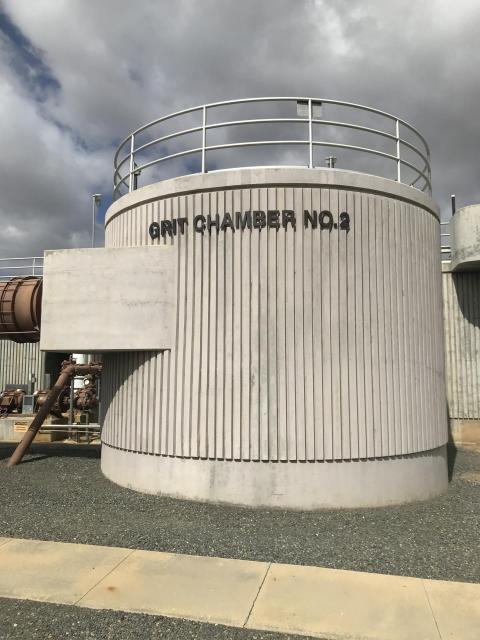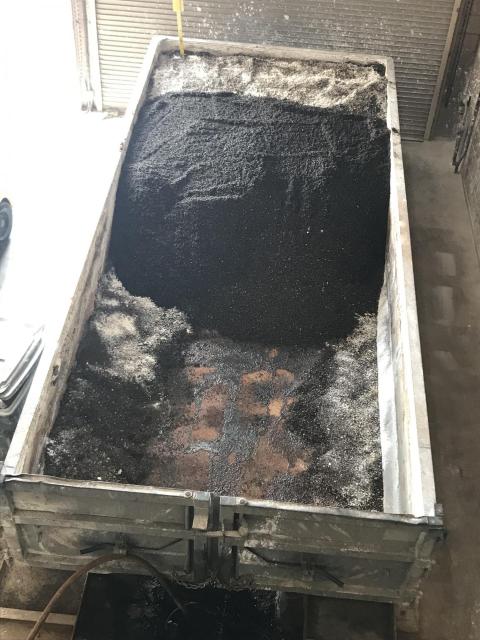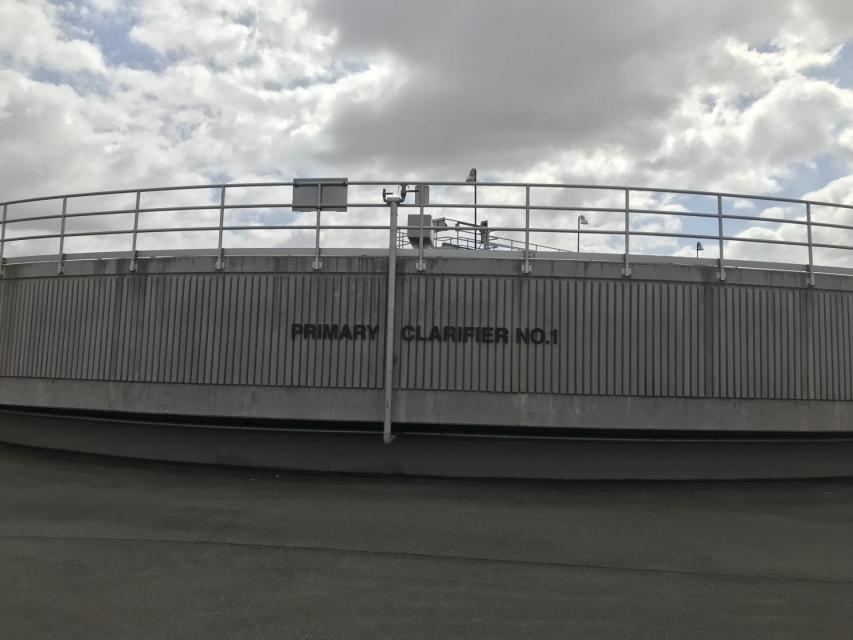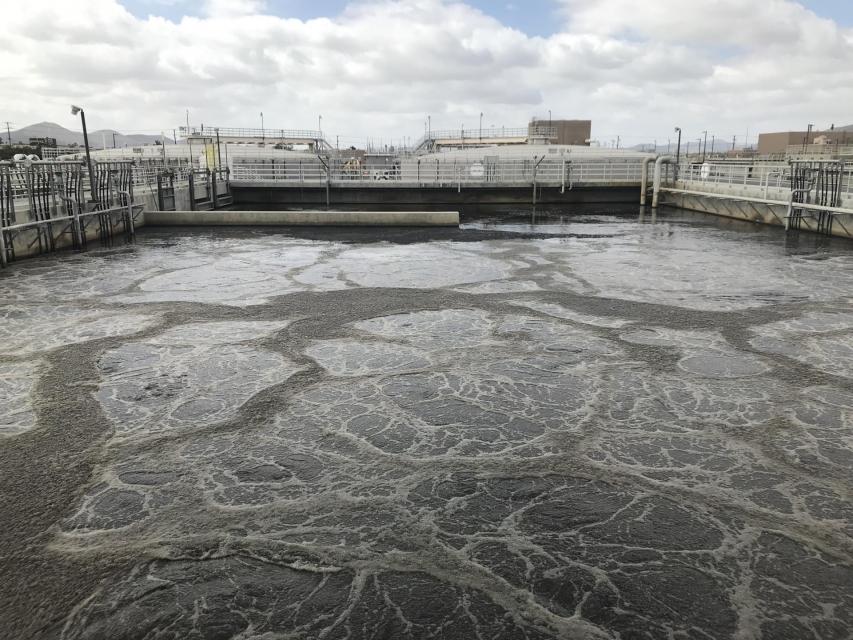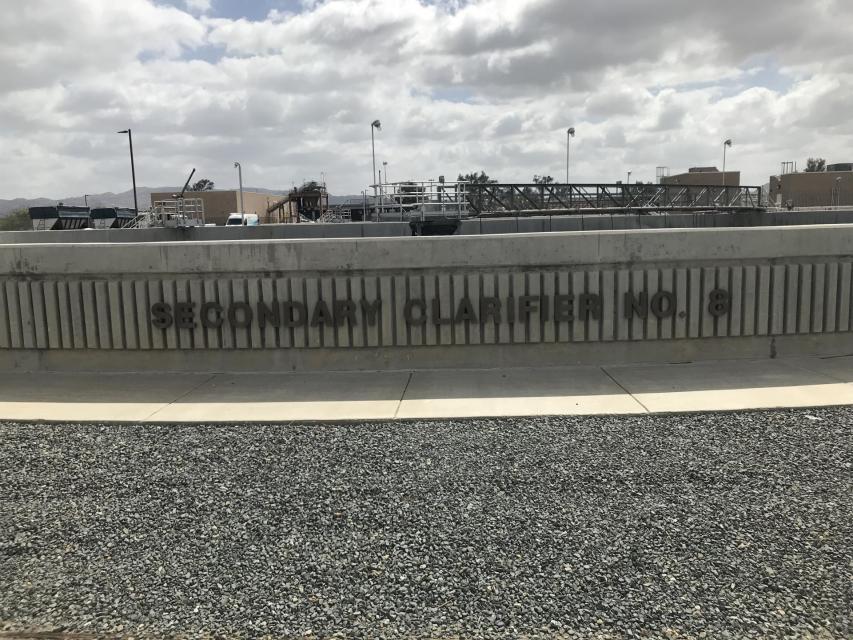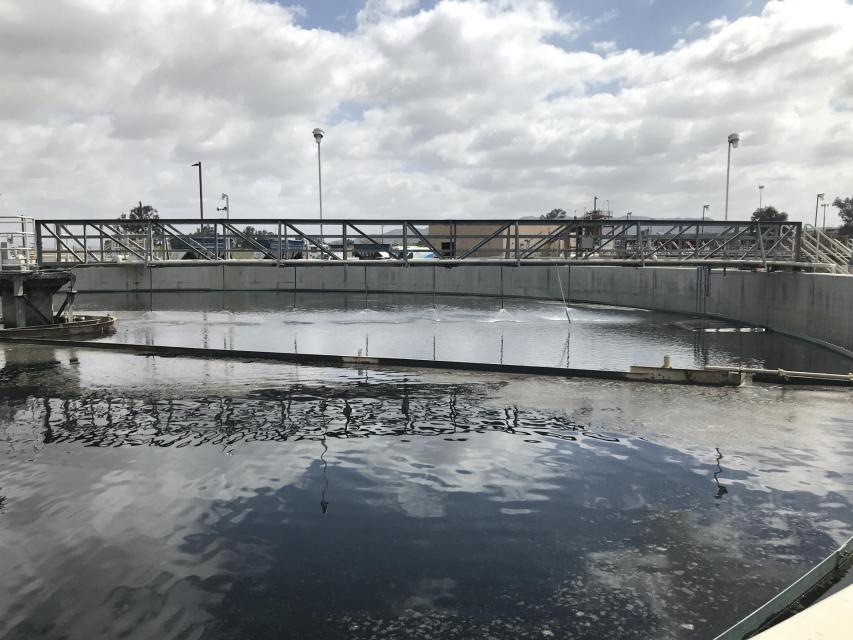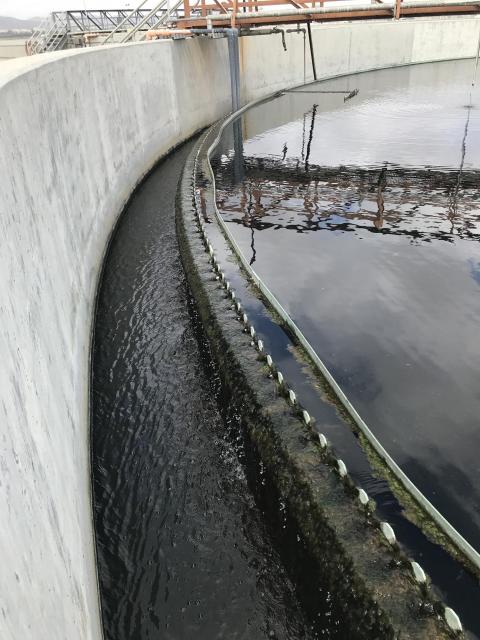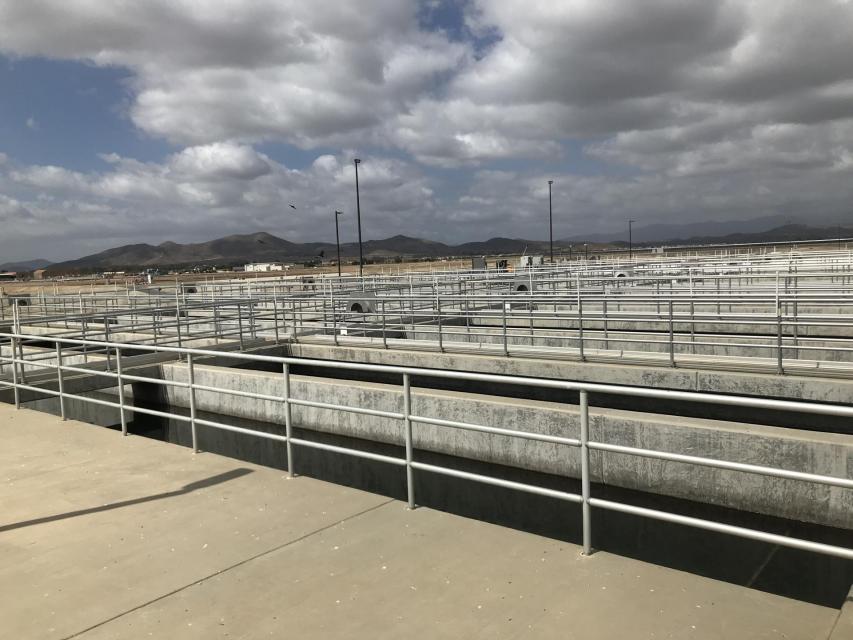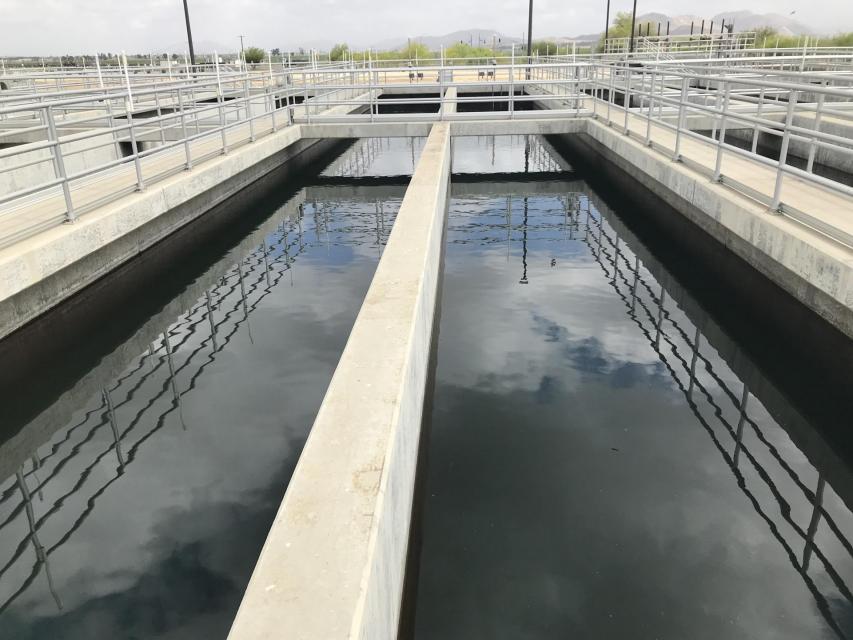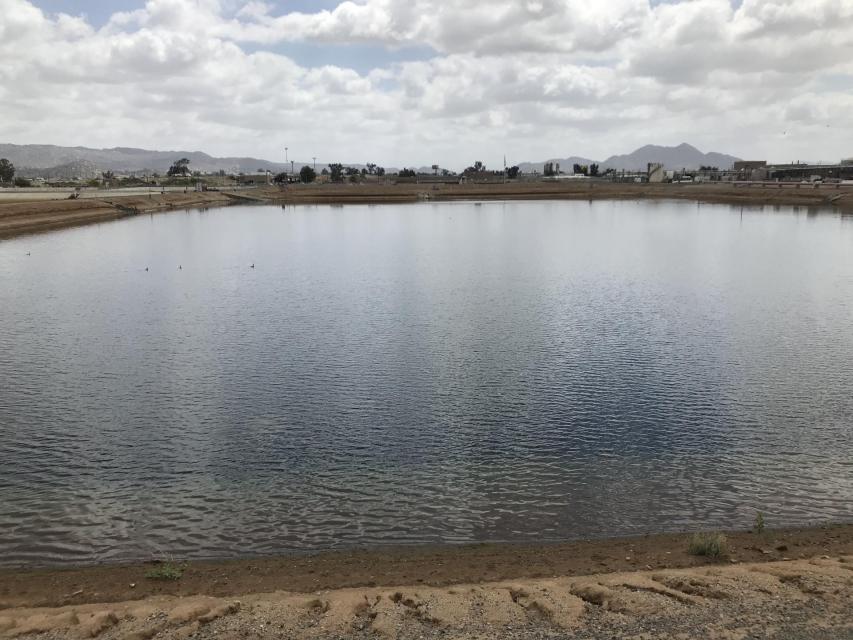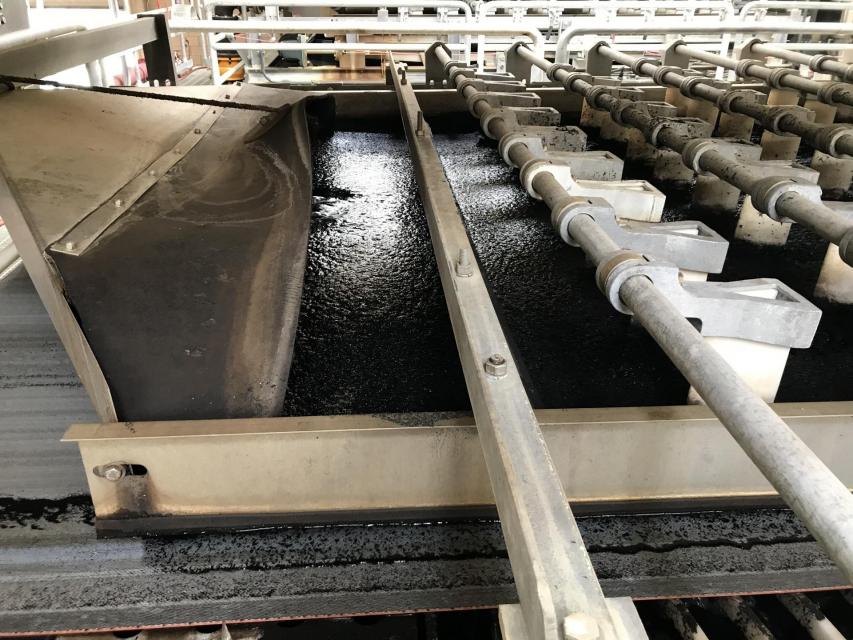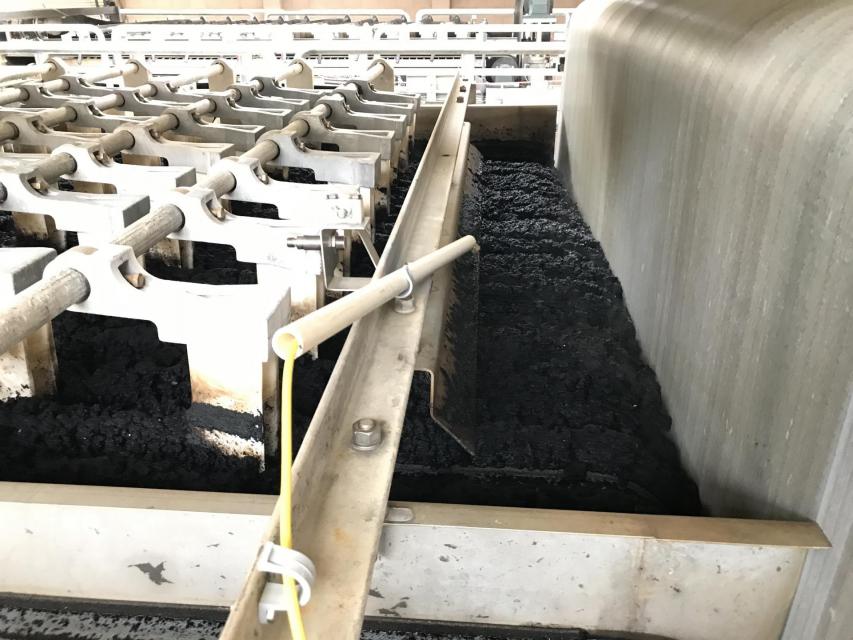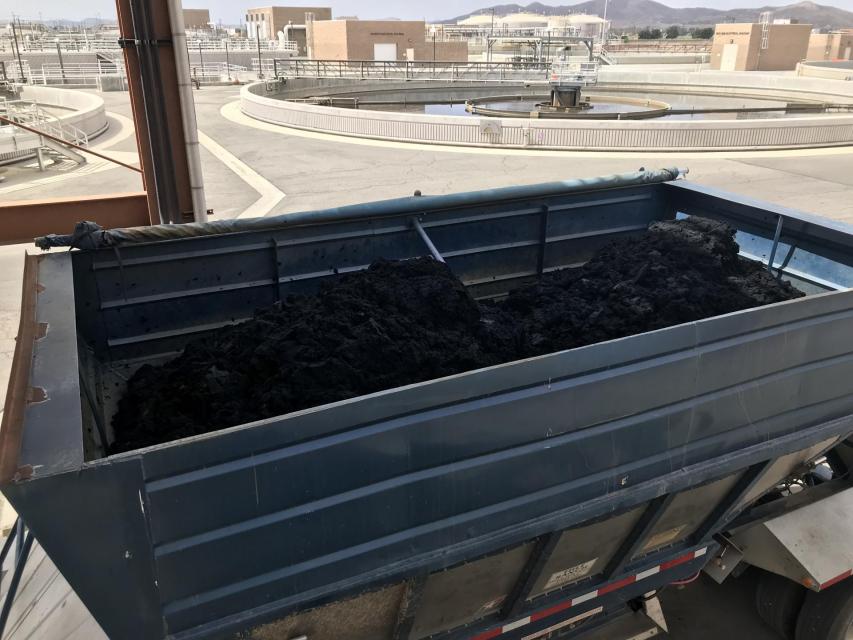PHOTO SERIES: After the Flush
How does wastewater treatment work?
Wastewater treatment is an essential part of a modern infrastructure, and its function is simpler than you might think. Take a closer look at how wastewater treatment facilities work and how your wastewater gets turned back into recycled water that can be used to water landscaping and crops.
All water that goes down the drains or you can flush away in the toilet in your home or business flows to one of EMWD’s Regional Water Reclamation Facilities (RWRF).
1. Once the water arrives at the RWRF, the water goes through the bar screen (pre-treatment). The bar screen removes large items that shouldn’t be in the wastewater like “flushable” wipes, diapers, etc. Items that shouldn’t be flushed down the drain can cause blockages in the sewer system and create a real mess. That’s why only the 3 P’s should be flushed down the toilet: poo pee, and toilet paper. Once the large items are removed, the water moves on to the next process.
2. Next the water moves to the grit chamber. The grit chamber removes smaller items from the water like sand, coffee grounds, eggshells, corn, etc. (Remember only the 3 p’s should go down the drain. All other items should go in the trash).
3. Next the water goes into the primary clarifier to remove organic matter that is still in the water like Fats, Oils, Grease (FOG). To properly dispose of FOG, mix them with absorbent waste material like paper towels, coffee grounds, or kitty litter and place them in the trash. Also put food scraps from plates and pans into the trash not down the garbage disposal.
4. Next the water goes into the aeration basins. The aeration basins are full of microorganisms that feed on microscopic dissolved and suspended solids that are still in the water. This process is called aerobic digestion.
5. Now the water goes to the secondary clarifier. At this stage, biological mater and solids are removed from the water and the water moves to the next stage called chlorine contact chambers and the solids (aka sludge) moves to the dewatering building where it will be processed for reuse as fertilizer.
6. This is where the water enters the chlorine contact chambers. At this stage the water goes through the disinfection stage of the process. EMWD uses chlorine to disinfect the water.
7. At this point the water is now called recycled water. Recycled water can be used to water landscaping and crops. EMWD is widely viewed as an industry leader in recycled water. EMWD regularly uses 100 percent of its recycled water supply for beneficial use within its 558-square mile service area. Recycled water is in great demand. About 75 percent of EMWD’s production is sold to agricultural, irrigation, and landscaping customers. EMWD serves several schools, parks, cities and county streetscaping, HOA landscape areas, golf courses, and wetlands habitat areas. Recycled water is held in holding ponds until the water is needed.
8. Meanwhile, in the dewatering building, water is removed from the sludge before it is transported to Arizona where it will be further cleaned and used as fertilizer.


